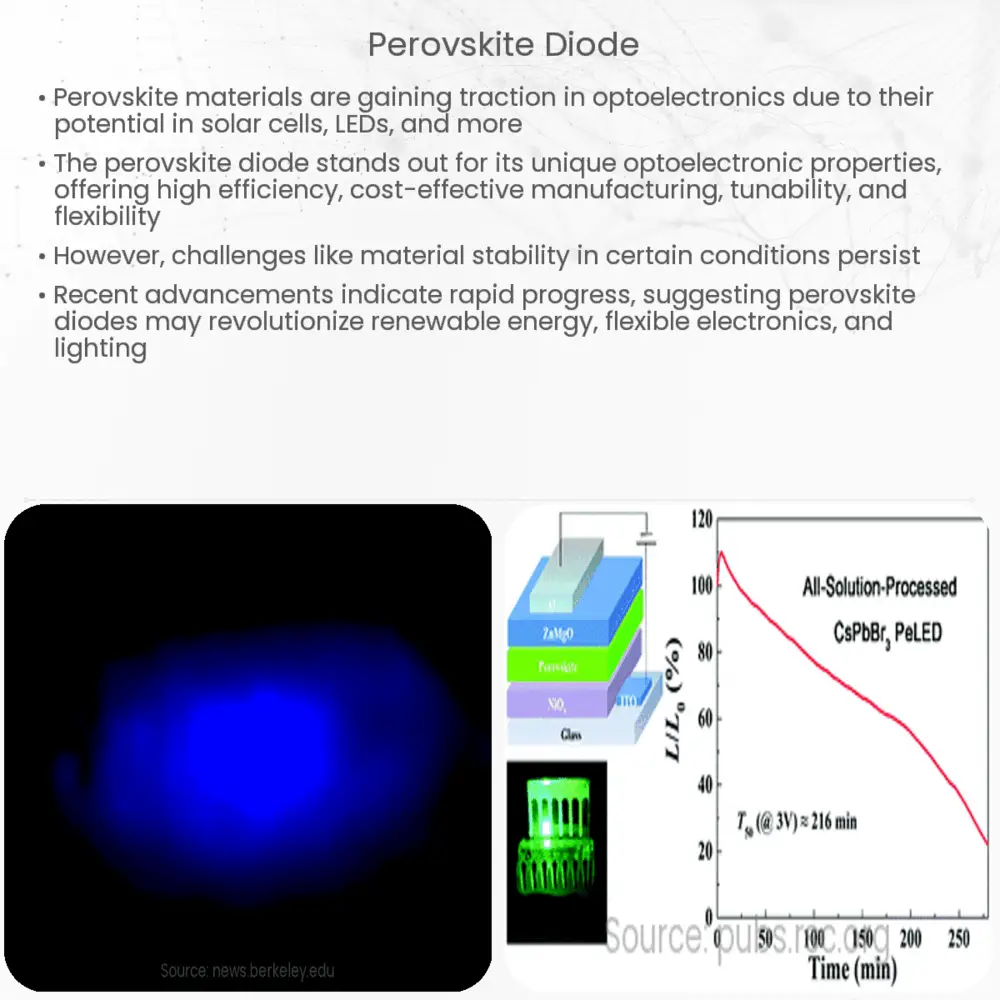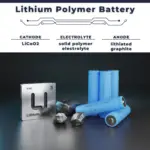Perovskite diodes offer high efficiency, low-cost manufacturing, and tunability, revolutionizing renewable energy, flexible electronics, and smart lighting.

Exploring the Perovskite Diode: A Revolution in Optoelectronics
Perovskite materials have taken the scientific world by storm in recent years, with their potential applications in solar cells, LEDs, and other optoelectronic devices. One of the most promising developments in this field is the perovskite diode, which has the potential to revolutionize not only renewable energy generation but also the world of electronics. In this article, we will delve into the fundamentals of perovskite diodes, their advantages over traditional materials, and the potential impact they could have on the future of technology.
What is a Perovskite Diode?
A perovskite diode is a semiconductor device that uses perovskite materials as the active layer. Perovskite materials have a unique crystal structure that lends them remarkable optoelectronic properties, such as high absorption coefficients, low non-radiative recombination rates, and long carrier diffusion lengths. These properties make them ideal for use in diodes, which are essential components in many electronic devices, including solar cells and light-emitting diodes (LEDs).
The Advantages of Perovskite Diodes
Perovskite diodes offer several key advantages over traditional semiconductor materials, such as silicon and gallium arsenide. Some of the most notable benefits include:
- High Efficiency: Perovskite materials have demonstrated exceptional solar-to-electric conversion efficiencies in solar cells, surpassing 25% in some cases. This makes them a highly competitive alternative to conventional silicon solar cells, which typically have efficiencies around 20%.
- Low-Cost Manufacturing: The fabrication of perovskite materials is significantly less expensive than that of traditional semiconductor materials, as they can be processed at lower temperatures and do not require the use of expensive vacuum systems.
- Tunability: One of the most exciting aspects of perovskite materials is their tunable bandgap, which allows for the customization of the material’s properties to suit specific applications. This opens up possibilities for the development of multi-junction solar cells, which can efficiently harvest a broader range of the solar spectrum, and color-tunable LEDs for various lighting and display applications.
- Flexibility and Lightweight: Perovskite materials can be deposited on flexible substrates, allowing for the creation of flexible and lightweight electronic devices. This could lead to innovative new applications, such as wearable technology and flexible solar panels.
Challenges and Future Prospects
Despite their numerous advantages, perovskite diodes still face some challenges that must be addressed before they can be widely adopted in commercial applications. One of the main concerns is the stability of perovskite materials, which can degrade under certain environmental conditions, such as high humidity or temperature. Researchers are actively working on developing strategies to improve the stability and durability of these materials, including the use of encapsulation techniques and alternative perovskite compositions.
Recent Breakthroughs in Perovskite Diodes
In recent years, there have been several significant breakthroughs in the development of perovskite diodes, demonstrating the rapid progress in this field. Some of the most notable advancements include:
- Enhanced Stability: Researchers have developed new perovskite compositions and fabrication techniques that significantly improve the stability and durability of these materials, bringing them closer to commercial viability.
- Efficient LEDs: Perovskite-based LEDs have shown impressive performance, with external quantum efficiencies (EQEs) surpassing 20%, which is competitive with conventional LEDs. Furthermore, the color tunability of perovskite LEDs has opened up opportunities for full-color displays and advanced lighting applications.
- Record-Breaking Solar Cells: Perovskite solar cells continue to achieve higher efficiencies, with recent reports of tandem perovskite-silicon solar cells reaching over 29% efficiency. This is a significant milestone, as it surpasses the theoretical efficiency limit of single-junction silicon solar cells.
Impact on the Future of Technology
Perovskite diodes have the potential to significantly impact the future of technology across various industries. Some of the most exciting possibilities include:
- Renewable Energy: The high efficiency and low-cost manufacturing of perovskite solar cells could lead to more widespread adoption of solar energy, helping to reduce our reliance on fossil fuels and combat climate change.
- Flexible Electronics: The flexibility and lightweight nature of perovskite diodes open up new possibilities for wearable technology, foldable displays, and flexible solar panels, potentially transforming the way we interact with electronic devices.
- Smart Lighting: Perovskite-based LEDs offer superior color tunability and efficiency compared to conventional LEDs, paving the way for smart lighting systems that can adapt to individual preferences and environmental conditions.
Conclusion
Perovskite diodes represent a promising new frontier in optoelectronics, with their remarkable properties and potential applications in solar cells, LEDs, and other electronic devices. While challenges related to stability and durability remain, recent breakthroughs have demonstrated the rapid progress being made in this field. As researchers continue to develop innovative solutions, perovskite diodes could play a crucial role in shaping the future of renewable energy, flexible electronics, and advanced lighting technologies.



